Install Steam
login
|
language
简体中文 (Simplified Chinese)
繁體中文 (Traditional Chinese)
日本語 (Japanese)
한국어 (Korean)
ไทย (Thai)
Български (Bulgarian)
Čeština (Czech)
Dansk (Danish)
Deutsch (German)
Español - España (Spanish - Spain)
Español - Latinoamérica (Spanish - Latin America)
Ελληνικά (Greek)
Français (French)
Italiano (Italian)
Bahasa Indonesia (Indonesian)
Magyar (Hungarian)
Nederlands (Dutch)
Norsk (Norwegian)
Polski (Polish)
Português (Portuguese - Portugal)
Português - Brasil (Portuguese - Brazil)
Română (Romanian)
Русский (Russian)
Suomi (Finnish)
Svenska (Swedish)
Türkçe (Turkish)
Tiếng Việt (Vietnamese)
Українська (Ukrainian)
Report a translation problem




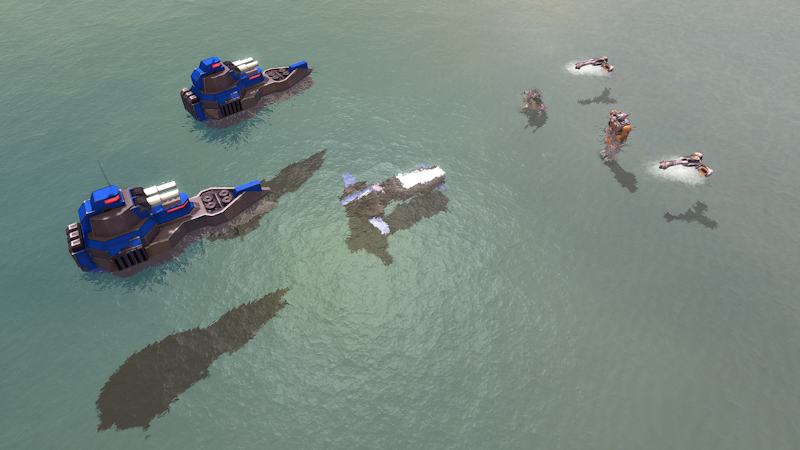 On land, all units (which are not flying, jumping or thrown) are standing on the ground. That ground might be flat, precipitous or anything in between. In water, on the other hand, there are four places a unit might plausibly be:
On land, all units (which are not flying, jumping or thrown) are standing on the ground. That ground might be flat, precipitous or anything in between. In water, on the other hand, there are four places a unit might plausibly be: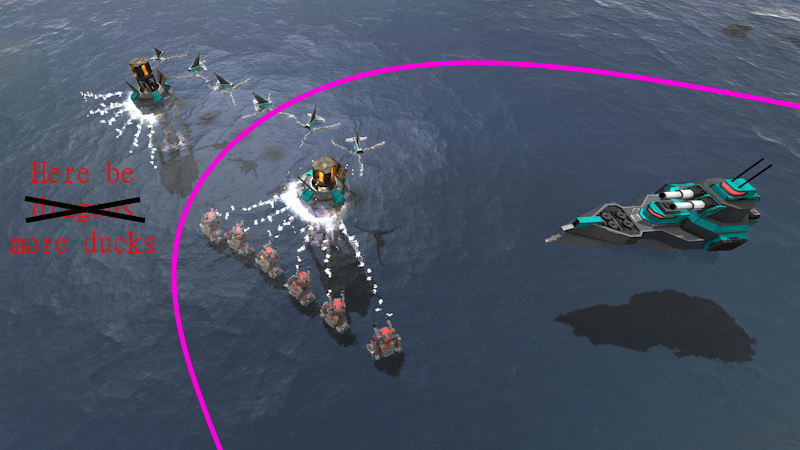 Verisimilitude demands that units under the water are more difficult to see than those on the surface. However, just like the ordinary fog-of-war mechanics deviate from `realistic’ line-of-sight for the purposes of gameplay, we simplify seeing underwater to a single mechanic, sonar. An enemy underwater unit is visible to us if and only if it is within the sonar radius of a friendly unit. To make things even simpler, in modern Zero-K all ‘sea units’ have sonar radius equal to their vision radius, while most other units do not (notably the Owl scout plane has limited sonar capability).
Verisimilitude demands that units under the water are more difficult to see than those on the surface. However, just like the ordinary fog-of-war mechanics deviate from `realistic’ line-of-sight for the purposes of gameplay, we simplify seeing underwater to a single mechanic, sonar. An enemy underwater unit is visible to us if and only if it is within the sonar radius of a friendly unit. To make things even simpler, in modern Zero-K all ‘sea units’ have sonar radius equal to their vision radius, while most other units do not (notably the Owl scout plane has limited sonar capability). 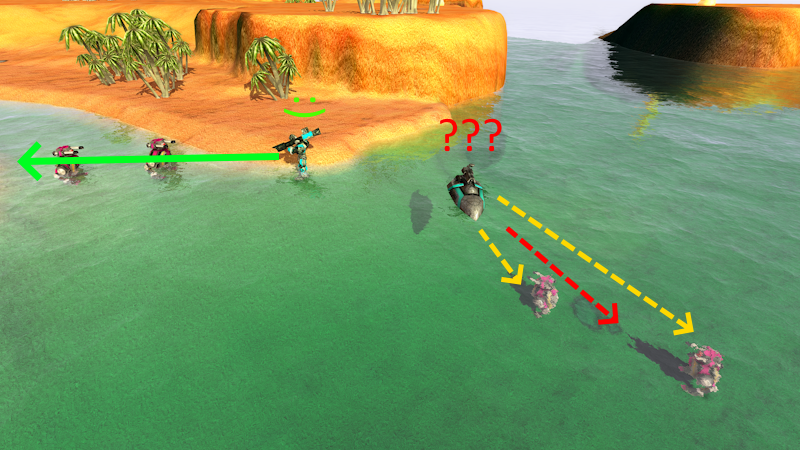 A second constraint on the weapons which are usable by and against underwater units is that the game mechanics must remain reasonable for a fairly wide range of water depths. Imagine, for example, a surface unit with an unguided torpedo with similar mechanics to the Ronin’s missile, firing at a group of Ducks on the sea floor. In shallow water the path of the torpedo traces a straight line lengthways through the Ducks, and is likely to hit one. In deep water the torpedo will instead have only a brief window where it is at an appropriate depth to hit the Ducks before it impacts the ground. This all sounds rather messy, so we have given all underwater-capable weapons tracking or other projectile properties which avoid this discrepancy.
A second constraint on the weapons which are usable by and against underwater units is that the game mechanics must remain reasonable for a fairly wide range of water depths. Imagine, for example, a surface unit with an unguided torpedo with similar mechanics to the Ronin’s missile, firing at a group of Ducks on the sea floor. In shallow water the path of the torpedo traces a straight line lengthways through the Ducks, and is likely to hit one. In deep water the torpedo will instead have only a brief window where it is at an appropriate depth to hit the Ducks before it impacts the ground. This all sounds rather messy, so we have given all underwater-capable weapons tracking or other projectile properties which avoid this discrepancy.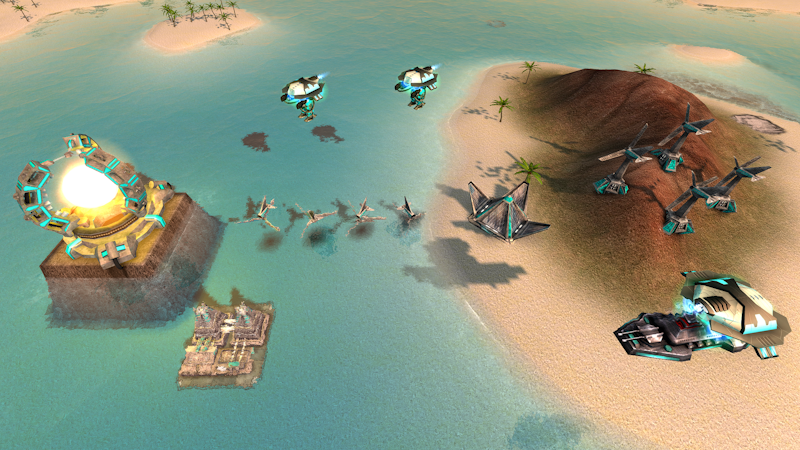 We conclude with a lightning round covering other interesting aspects of Zero-K’s sea design.
We conclude with a lightning round covering other interesting aspects of Zero-K’s sea design.




 Introduction to Unit Classes and Factories
Introduction to Unit Classes and Factories 
 Basic Gameplay / Multiplayer Guide
Basic Gameplay / Multiplayer Guide  Introduction to Basic Economy
Introduction to Basic Economy 
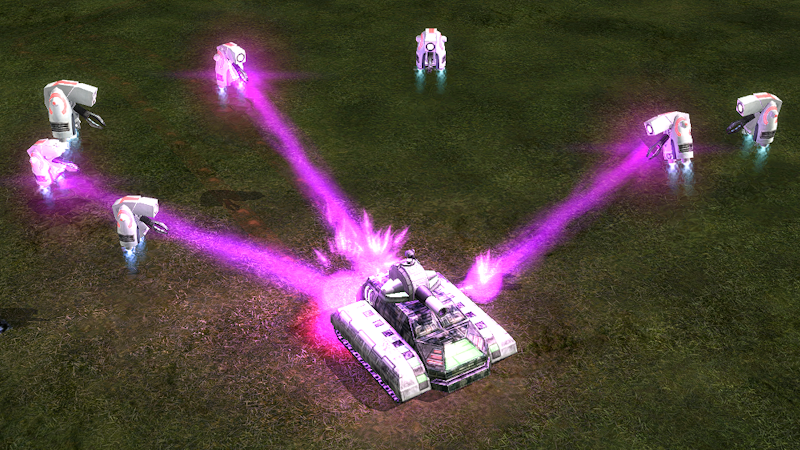 Slow damage was the solution to the Arm monopoly on status effects: a new status effect just for Core. I recall MidKnight adding it as an alternative to moving the main Core stun unit, the Gnat-equivalent, to Arm. Gnat ultimately gained lightning and was transferred, but slow stuck around. Numerous Core units gained slow damage over the years, until the mechanic found its home as a core aspect of the Amphbot factory. This factory was added after we merged the factions, yet in many ways maintains the old Core aesthetic of raw power and toughness.
Slow damage was the solution to the Arm monopoly on status effects: a new status effect just for Core. I recall MidKnight adding it as an alternative to moving the main Core stun unit, the Gnat-equivalent, to Arm. Gnat ultimately gained lightning and was transferred, but slow stuck around. Numerous Core units gained slow damage over the years, until the mechanic found its home as a core aspect of the Amphbot factory. This factory was added after we merged the factions, yet in many ways maintains the old Core aesthetic of raw power and toughness.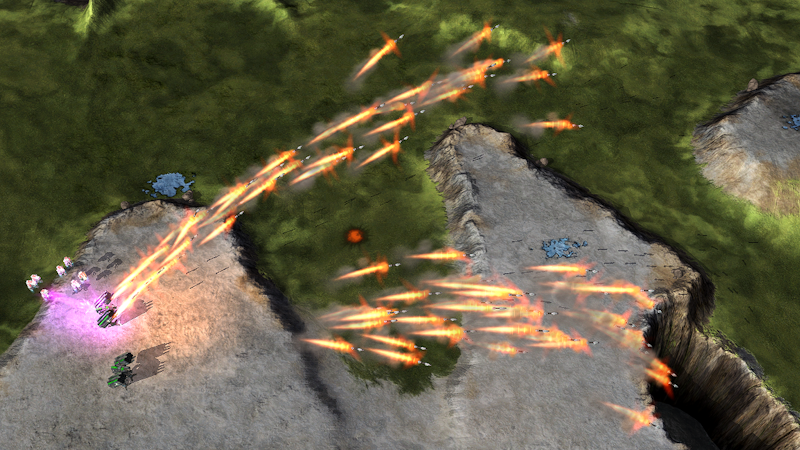 Slow has driven and benefited from the development of increasingly powerful gadgetry. There is no stated limit on what can be slowed, so we have gradually expanded its scope by making more and more things slowable. Almost everything is covered at this point, including movement speeds, reload times, and economic rates, with the main exception being jump speed. This is great for modding, and shows off the power of the engine, since slow would be harder to implement in an engine that updated less than 30 times a second. The high tick rate lets us treat time as continuous without too many issues, even though actions only happen every 33 milliseconds.
Slow has driven and benefited from the development of increasingly powerful gadgetry. There is no stated limit on what can be slowed, so we have gradually expanded its scope by making more and more things slowable. Almost everything is covered at this point, including movement speeds, reload times, and economic rates, with the main exception being jump speed. This is great for modding, and shows off the power of the engine, since slow would be harder to implement in an engine that updated less than 30 times a second. The high tick rate lets us treat time as continuous without too many issues, even though actions only happen every 33 milliseconds.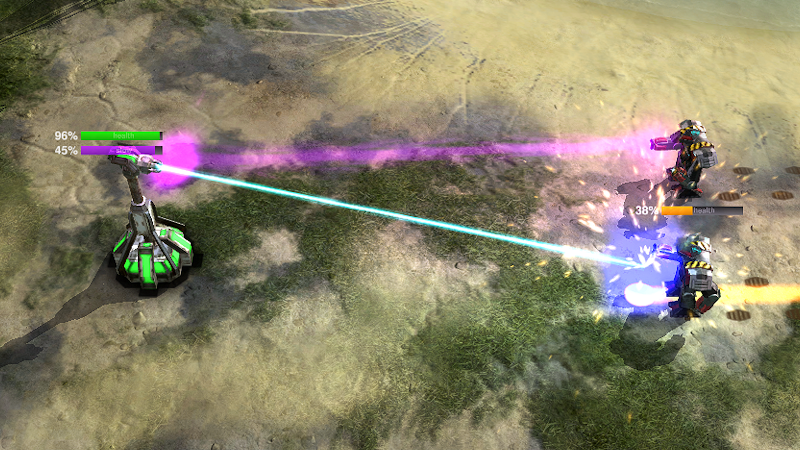 The first recipients of slow damage were Outlaw and Moderator. The Outlaw used to be a standard riot armed with a Bandit blaster in one hand and a Ripper gun (then Leveler) in the other, which is where we get the phrase "Leveler sidearm". It gained the disruptor pulse while the rest of Core T1 bots were undergoing a shield makeover, since friendly-fire-less area of effect damage works great in a shield ball. The disruptor pulse is unique in that it does not damage allied units, and was conceptualised as some sort of control system attack.
The first recipients of slow damage were Outlaw and Moderator. The Outlaw used to be a standard riot armed with a Bandit blaster in one hand and a Ripper gun (then Leveler) in the other, which is where we get the phrase "Leveler sidearm". It gained the disruptor pulse while the rest of Core T1 bots were undergoing a shield makeover, since friendly-fire-less area of effect damage works great in a shield ball. The disruptor pulse is unique in that it does not damage allied units, and was conceptualised as some sort of control system attack.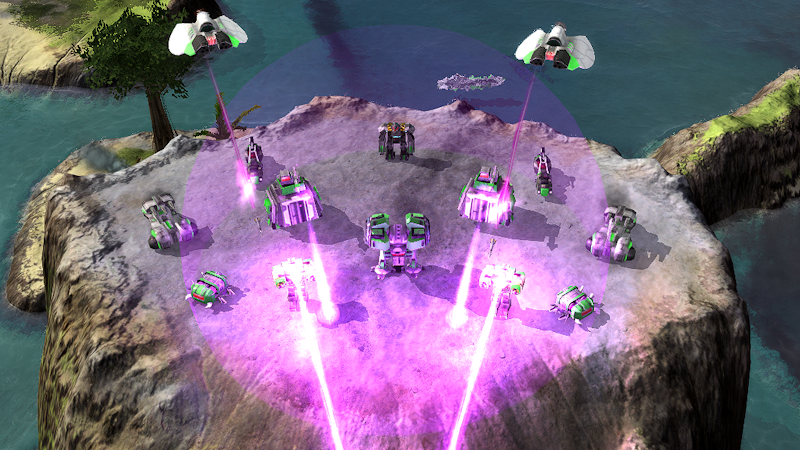 A few units gained slow for similar reasons to Moderator, to the point that "give it slow" became a meme. This was done to units that were underwhelming or lacking a distinct role. The skirmisher gunship Harpy was in an awkward spot between the faster Locust and tougher Revenant, while Dart lacked a clear purpose within Rover. Cyclops used to have a flamethrower sidearm, but this made it hard to counter with swarms, so it was switched out for a slow beam to give it utility over Minotaur. Seawolf gained a slowing torpedo as part of a sea rework.
A few units gained slow for similar reasons to Moderator, to the point that "give it slow" became a meme. This was done to units that were underwhelming or lacking a distinct role. The skirmisher gunship Harpy was in an awkward spot between the faster Locust and tougher Revenant, while Dart lacked a clear purpose within Rover. Cyclops used to have a flamethrower sidearm, but this made it hard to counter with swarms, so it was switched out for a slow beam to give it utility over Minotaur. Seawolf gained a slowing torpedo as part of a sea rework.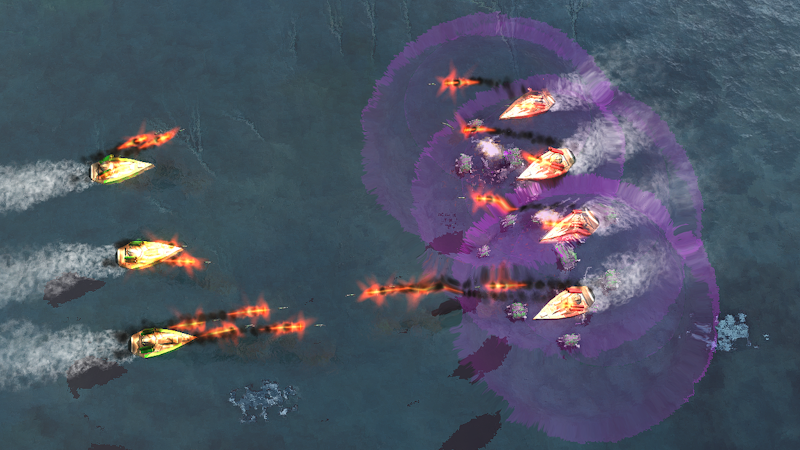 We avoided adding too much slow, but it has still accumulated over the years without really considering what it is in the game world. Is it time dilation, or perhaps a virus, as implied by Outlaw? Are units being mechanically gummed up by some sort of purple goo? Slow damage is dealt by various types of missile, beam and arcing projectile, with the only unifying characteristic being the colour purple. Compared to the consistency of lightning and EMP it is a bit of a mess. This may be a minor problem, but systems generally feel better when presented in a consistent way.
We avoided adding too much slow, but it has still accumulated over the years without really considering what it is in the game world. Is it time dilation, or perhaps a virus, as implied by Outlaw? Are units being mechanically gummed up by some sort of purple goo? Slow damage is dealt by various types of missile, beam and arcing projectile, with the only unifying characteristic being the colour purple. Compared to the consistency of lightning and EMP it is a bit of a mess. This may be a minor problem, but systems generally feel better when presented in a consistent way.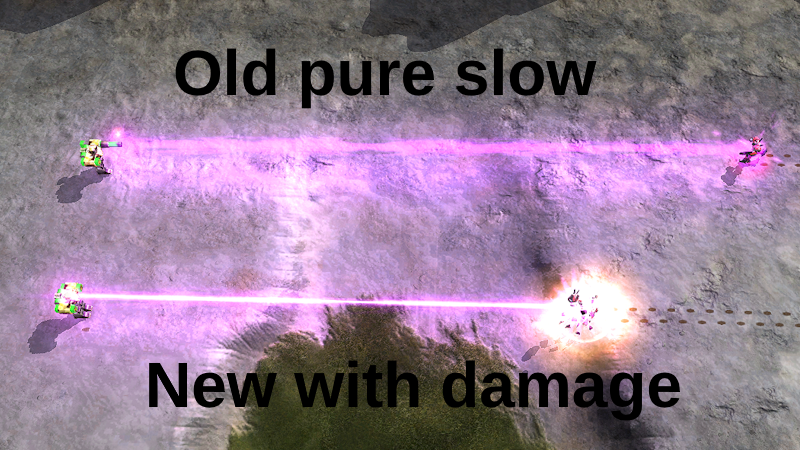 These days most slow damage weapons deal slow as a bonus, rather than as their primary purpose. Outlaw, Moderator, Buoy and Constable would be much worse without slow, but with a corresponding cost decrease, would probably still find use. It would be interesting to experiment with more pure slow, but for now, slow provides a much-needed counters for heavy units and mitigates a bit of damage. The more dedicated sources of slow, such as those with large area of effect, are fairly niche, but this is probably preferable to permanently playing the game at half speed.
These days most slow damage weapons deal slow as a bonus, rather than as their primary purpose. Outlaw, Moderator, Buoy and Constable would be much worse without slow, but with a corresponding cost decrease, would probably still find use. It would be interesting to experiment with more pure slow, but for now, slow provides a much-needed counters for heavy units and mitigates a bit of damage. The more dedicated sources of slow, such as those with large area of effect, are fairly niche, but this is probably preferable to permanently playing the game at half speed.
 Types of units for the basic factories (Cloak/Shield/Rover)
Types of units for the basic factories (Cloak/Shield/Rover) 




 Askeri Sınıf Rehberi
Askeri Sınıf Rehberi 


 Loading
Loading
